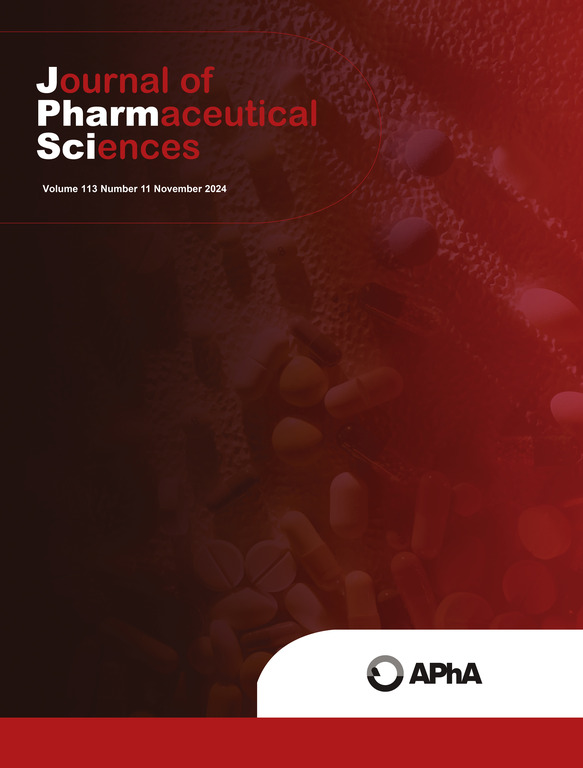Immersion probe Raman for pharmaceutical suspension testing in the manufacturing plant and laboratory: Flow considerations for quantitative applications
IF 3.8
3区 医学
Q2 CHEMISTRY, MEDICINAL
引用次数: 0
Abstract
Traditional analysis of pharmaceutical suspensions by liquid chromatography requires time, manual sample preparation, and solvents. In this work, we explored an alternative procedure for quantifying the active pharmaceutical ingredient (API) of liquid samples using a non-destructive method, back scattering Raman with an immersion probe, with no additional sample preparation in lab-based off-line and plant-based in-line settings. Coupling the Raman signal to compact high-performance liquid chromatography (HPLC) measurements was a useful way to monitor the suspension transfer and filling process during investigational studies. That process entailed a flowing, rather than static, suspension. Therefore, understanding the impact of a flowing suspension on the Raman signal of the API for quantitation was critical. To help address the lab-based and production-scale applications, we developed a theoretical framework for measuring flowing suspensions by Raman, created chemometric models for lab use, and experimentally investigated the impact of flowing versus static suspensions on back scatter Raman measurements.
浸没探针拉曼用于制药工厂和实验室的药物悬浮液测试:定量应用的流动考虑。
传统的药物悬浮液液相色谱分析需要时间、手工样品制备和溶剂。在这项工作中,我们探索了一种用于定量液体样品活性药物成分(API)的替代方法,使用非破坏性方法,使用浸入式探针的反向散射拉曼,无需在实验室离线和基于植物的在线设置中进行额外的样品制备。在研究过程中,将拉曼信号与紧凑的高效液相色谱(HPLC)测量相结合是监测悬浮液转移和填充过程的有效方法。这个过程需要流动而不是静态的悬浮。因此,了解流动悬浮液对原料药拉曼信号的影响是至关重要的。为了帮助解决实验室和生产规模的应用,我们开发了一个通过拉曼测量流动悬浮液的理论框架,创建了实验室使用的化学计量模型,并实验研究了流动悬浮液与静态悬浮液对后向散射拉曼测量的影响。
本文章由计算机程序翻译,如有差异,请以英文原文为准。
求助全文
约1分钟内获得全文
求助全文
来源期刊
CiteScore
7.30
自引率
13.20%
发文量
367
审稿时长
33 days
期刊介绍:
The Journal of Pharmaceutical Sciences will publish original research papers, original research notes, invited topical reviews (including Minireviews), and editorial commentary and news. The area of focus shall be concepts in basic pharmaceutical science and such topics as chemical processing of pharmaceuticals, including crystallization, lyophilization, chemical stability of drugs, pharmacokinetics, biopharmaceutics, pharmacodynamics, pro-drug developments, metabolic disposition of bioactive agents, dosage form design, protein-peptide chemistry and biotechnology specifically as these relate to pharmaceutical technology, and targeted drug delivery.

 求助内容:
求助内容: 应助结果提醒方式:
应助结果提醒方式:


